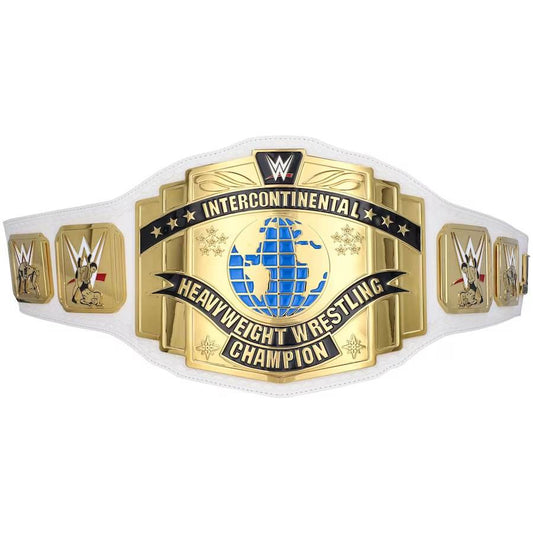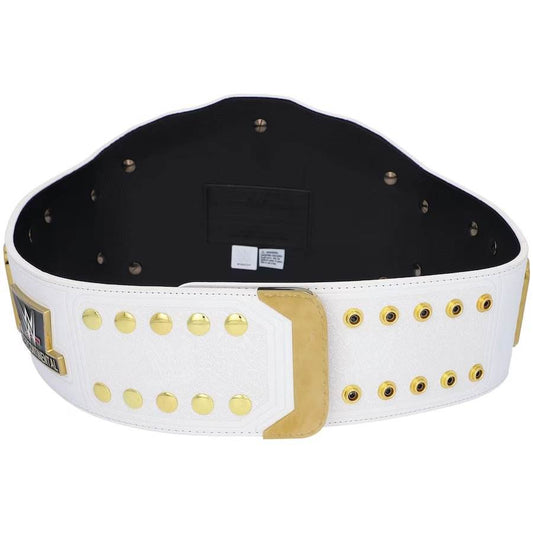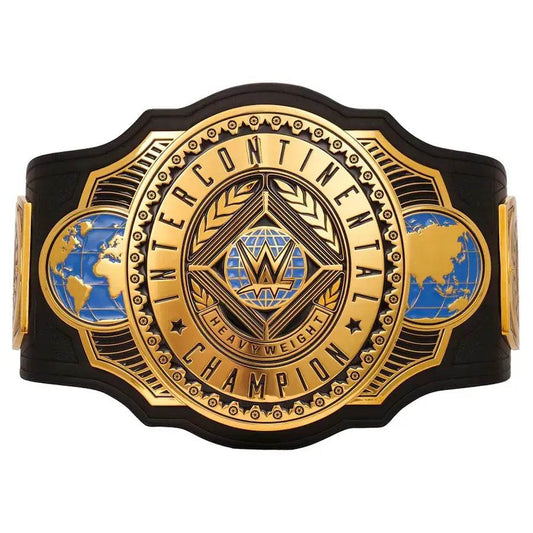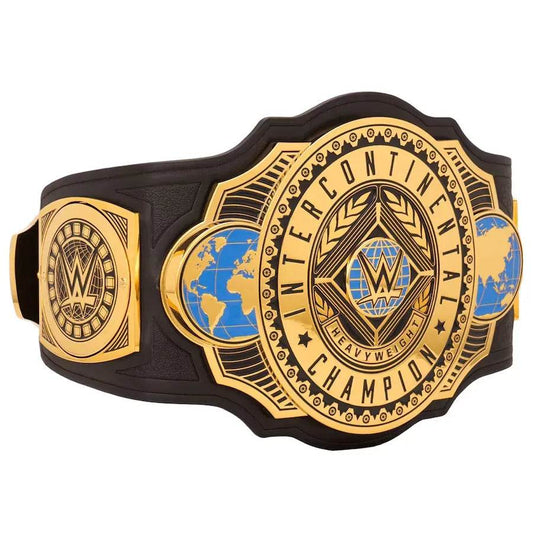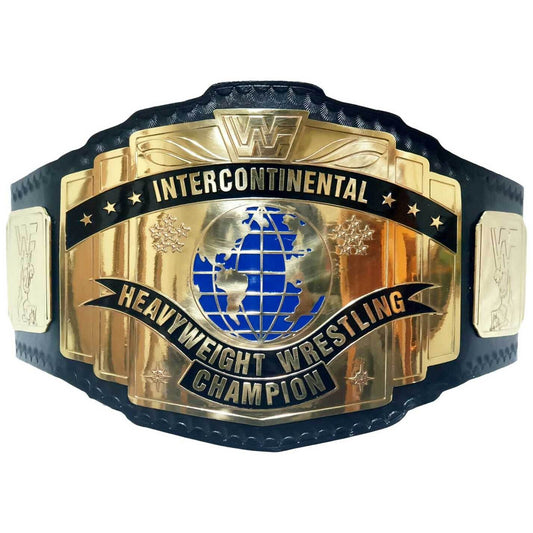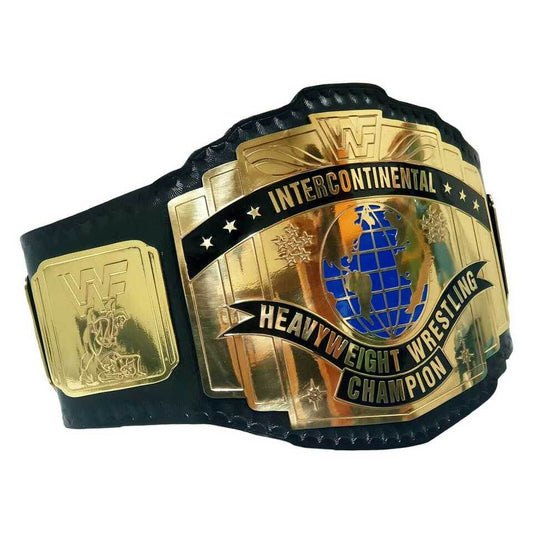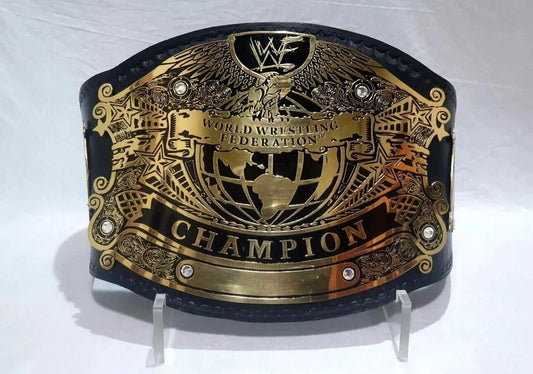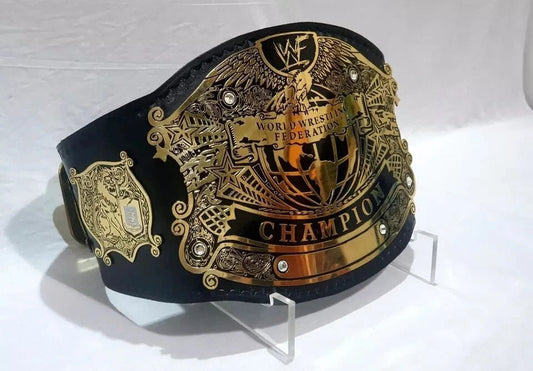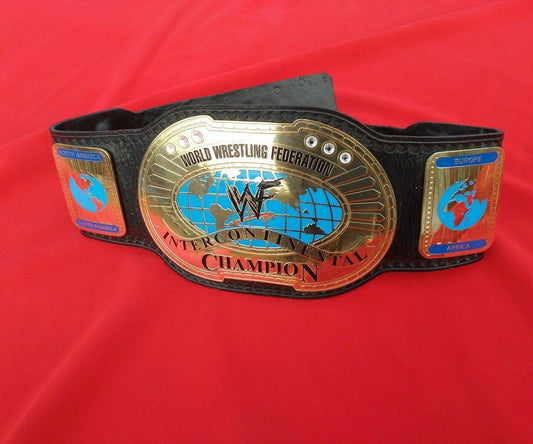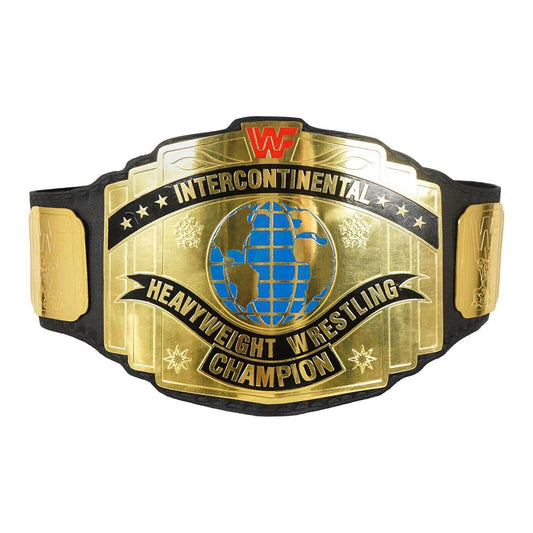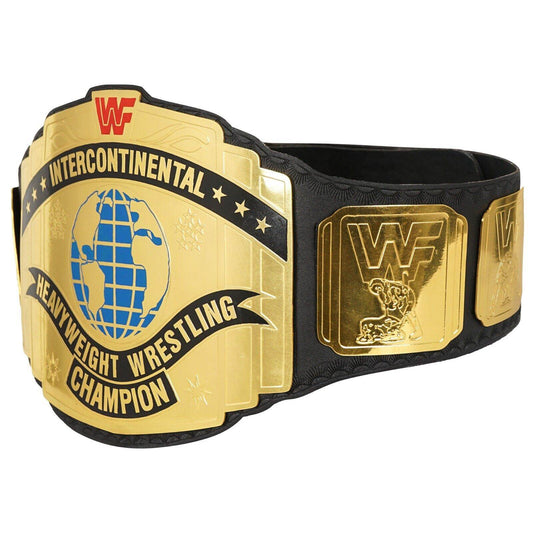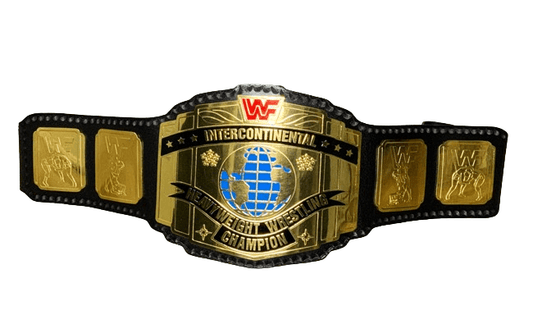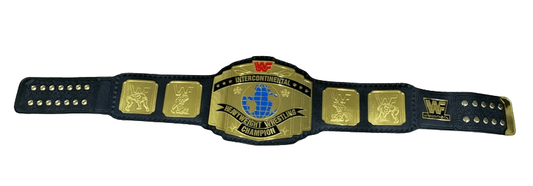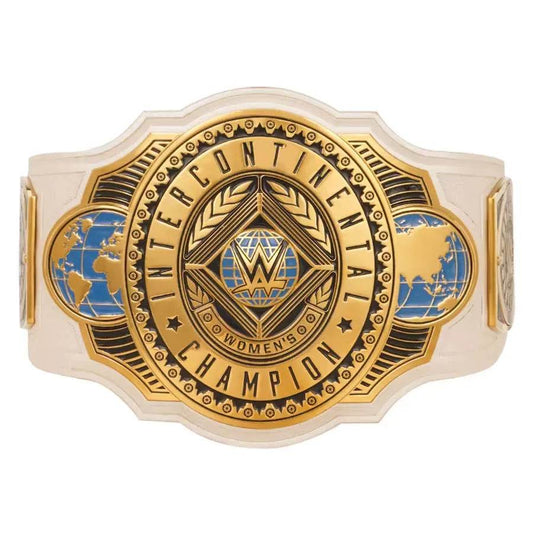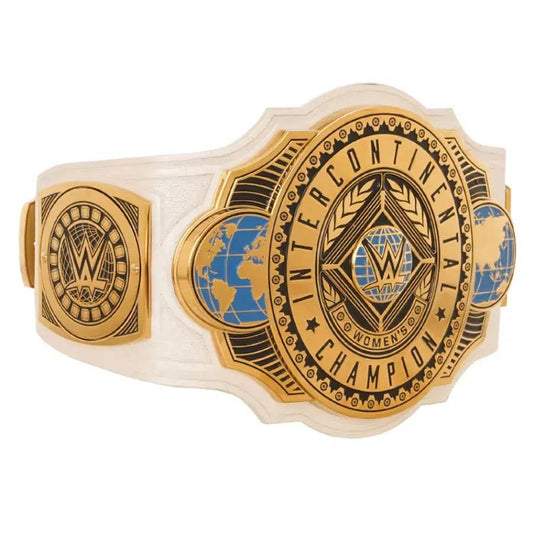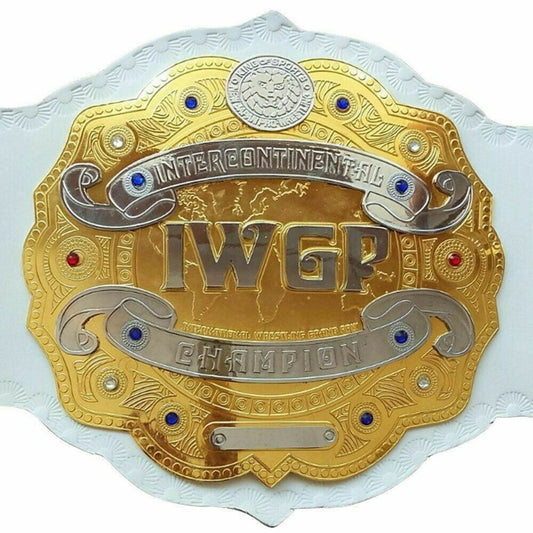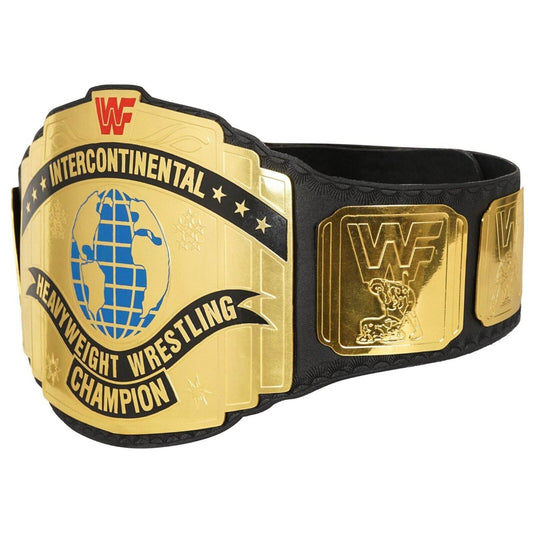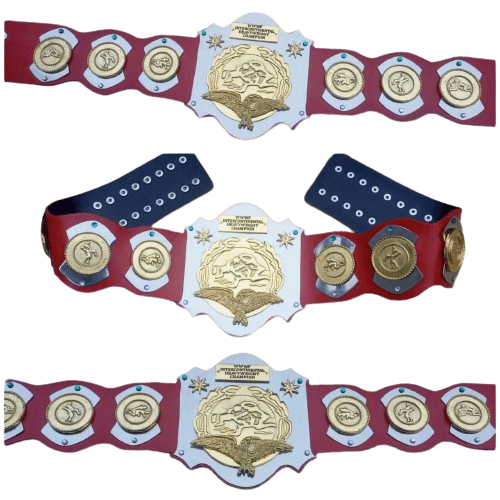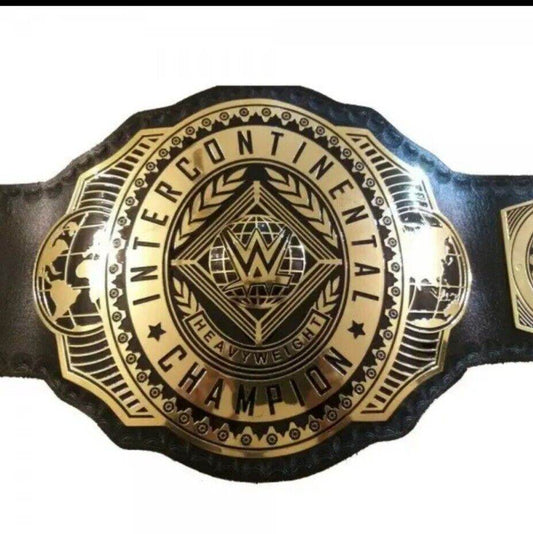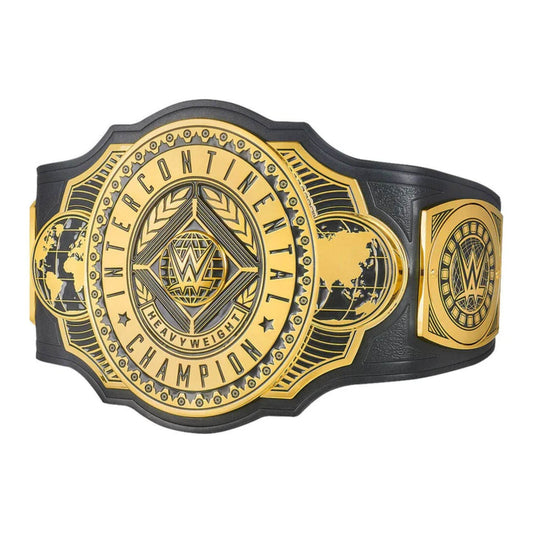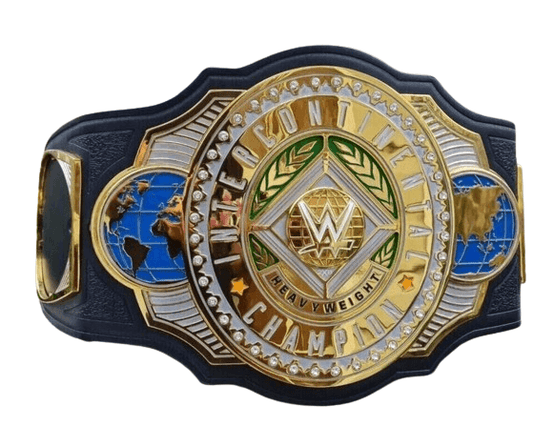-
2014 WWE Intercontinental Championship Replica Title Belt
4.67 / 5.0
(3) 3 total reviews
Regular price $149.00 USDRegular priceUnit price / per$250.00 USDSale price $149.00 USDSale -
WWE 2024 Intercontinental Championship Replica Title Belt
4.0 / 5.0
(1) 1 total reviews
Regular price $149.00 USDRegular priceUnit price / per$250.00 USDSale price $149.00 USDSale -
WWF Intercontinental Championship Belt
4.5 / 5.0
(2) 2 total reviews
Regular price $149.00 USDRegular priceUnit price / per$200.00 USDSale price $149.00 USDSale -
WWF Undisputed Championship Belt
Regular price $149.00 USDRegular priceUnit price / per$200.00 USDSale price $149.00 USDSale -
WWF Oval IC Intercontinental Championship Leather Belt
4.5 / 5.0
(2) 2 total reviews
Regular price $149.00 USDRegular priceUnit price / per$250.00 USDSale price $149.00 USDSale -
WWF Intercontinental Block Logo Championship Replica Title Belt
4.5 / 5.0
(2) 2 total reviews
Regular price $149.00 USDRegular priceUnit price / per$200.00 USDSale price $149.00 USDSale -
WWF Intercontinental Block Heavyweight Championship Belt
4.5 / 5.0
(2) 2 total reviews
Regular price $149.00 USDRegular priceUnit price / per$250.00 USDSale price $149.00 USDSale -
WWE Women's 2024 Intercontinental Championship Replica Title Belt
Regular price $149.00 USDRegular priceUnit price / per$250.00 USDSale price $149.00 USDSale -
IWGP Intercontinental Championship Replica Title Belt
4.67 / 5.0
(3) 3 total reviews
Regular price $149.00 USDRegular priceUnit price / per$200.00 USDSale price $149.00 USDSale -
Black WWF Intercontinental Championship Replica Title Belt
4.5 / 5.0
(2) 2 total reviews
Regular price $149.00 USDRegular priceUnit price / per$200.00 USDSale price $149.00 USDSale -
Wwwf Patterson Intercontinental Heavyweight Championship Title Belt
4.5 / 5.0
(2) 2 total reviews
Regular price $199.00 USDRegular priceUnit price / per$250.00 USDSale price $199.00 USDSale -
WWF intercontinental championship mini wrestling replica title belt
4.5 / 5.0
(2) 2 total reviews
Regular price $149.00 USDRegular priceUnit price / per$160.00 USDSale price $149.00 USDSale -
WWE Intercontinental Block Heavyweight Championship Belt
4.5 / 5.0
(2) 2 total reviews
Regular price $149.00 USDRegular priceUnit price / per$200.00 USDSale price $149.00 USDSale -
WWE Intercontinental Heavyweight Championship Replica Title Belt
4.5 / 5.0
(2) 2 total reviews
Regular price $179.00 USDRegular priceUnit price / per$250.00 USDSale price $179.00 USDSale -
WWE Custom Intercontinental Championship Replica Title Belt
4.5 / 5.0
(2) 2 total reviews
Regular price $179.00 USDRegular priceUnit price / per$200.00 USDSale price $179.00 USDSale -
WWE Attitude Era Intercontinental Championship Replica Title Belt
4.5 / 5.0
(2) 2 total reviews
Regular price $149.00 USDRegular priceUnit price / per$250.00 USDSale price $149.00 USDSale
Collection: Intercontinental Championship Belts
WWE Intercontinental Championship Belt - WWF Intercontinental Championship Belt - Intercontinental Championship Belts

The world of professional wrestling has always been defined by its championship belts, and few hold as much prestige and history as the intercontinental championship belt. As someone who has collected wrestling memorabilia for over two decades, I can confidently say that the WWE intercontinental championship belt stands as one of the most coveted prizes in sports entertainment. This magnificent piece of wrestling history represents not just athletic achievement, but a stepping stone to greatness that has been worn by legends and future hall of famers alike.
When we talk about championship belts in professional wrestling, the intercontinental championship belt occupies a unique position in the hierarchy. It's more than just a secondary title – it's a proving ground where superstars demonstrate their worthiness for the main event scene. The craftsmanship, design evolution, and cultural impact of these belts have made them essential collectibles for wrestling enthusiasts worldwide.
The Rich Heritage of Wrestling's Secondary Crown
The intercontinental championship wwe belts have undergone numerous transformations since their inception, each iteration telling a story of the era it represented. From my personal experience handling various versions over the years, I've witnessed firsthand how each design reflects the creative direction and aesthetic preferences of different periods in wrestling history.
The original design featured a classic gold-plated finish with intricate detailing that spoke to the championship's importance within the company's hierarchy. The wwe belts intercontinental championship belt series has always maintained certain core elements while adapting to modern sensibilities and manufacturing capabilities. The central plate typically showcases the iconic logo, surrounded by decorative elements that have evolved from simple geometric patterns to more complex artistic representations.
What makes these belts particularly fascinating is their connection to legendary matches and storylines. Every scratch, every replaced nameplate, every modification tells a story of the warriors who have carried this championship into battle. The weight of the belt itself – both literally and figuratively – represents the responsibility that comes with being the intercontinental champion.
Evolution Through the Decades
The wwf intercontinental championship belt era represents a golden age of wrestling design and presentation. During this period, the belts were crafted with meticulous attention to detail, featuring genuine leather straps and high-quality metal work that has stood the test of time. The transition from WWF to WWE brought subtle but significant changes to the championship's appearance, though the core identity remained intact.
One of the most striking variations introduced was the white intercontinental championship belt, which emerged during specific storylines and represented a departure from traditional wrestling championship aesthetics. This unique colorway created quite a stir among fans and collectors, as it challenged conventional expectations of what a championship belt should look like. The white version maintained all the structural elements of its traditional counterpart while offering a fresh visual perspective that aligned with certain character developments and narrative arcs.
The introduction of the new intercontinental championship belt designs has always generated excitement within the wrestling community. Each redesign represents an opportunity to honor the championship's legacy while introducing contemporary elements that resonate with modern audiences. These updates often incorporate advanced manufacturing techniques, improved materials, and design elements that reflect current branding initiatives.
The Collector's Perspective on Championship Replicas
For enthusiasts and collectors, the wwe intercontinental championship toy belt market offers an accessible entry point into championship collecting. These simplified versions capture the essential visual elements of the full-sized championships while being produced at price points that make them available to younger fans and casual collectors. The intercontinental championship toy belt variants have become increasingly sophisticated over the years, with manufacturers investing in better materials and more accurate detailing.
The toy intercontinental championship belt category encompasses a wide range of products, from basic plastic versions designed for active play to more detailed collector-focused items that bridge the gap between toys and full replicas. These products serve an important role in maintaining fan engagement and introducing new generations to the rich history of the intercontinental championship.
Moving up the quality spectrum, the wwe intercontinental championship replica belt represents the pinnacle of commercially available championship reproductions. These items are crafted with remarkable attention to detail, often using many of the same materials and techniques employed in creating the television versions. The wwe intercontinental championship belt white replica variants have become particularly sought after due to their limited availability and unique aesthetic appeal.
Manufacturing Excellence and Authentic Details
The wwf intercontinental championship belt replica market has evolved significantly over the decades, with modern reproductions achieving levels of accuracy that were unimaginable in earlier eras. Contemporary replica manufacturers employ advanced techniques such as zinc die-casting, genuine leather crafting, and precision metalwork to create items that closely mirror their television counterparts.
From my experience examining various replicas, the attention to detail in modern productions is remarkable. The wwe toy intercontinental championship belt line has particularly impressed me with its evolution from simple plastic toys to sophisticated collector items that incorporate metal elements, genuine leather components, and accurate proportions that reflect the dimensions of the actual championship belts used on television.
The manufacturing process for these replicas involves multiple stages, each requiring specialized expertise. The metal plates are typically created through precision die-casting, ensuring consistent quality and accurate reproduction of intricate design elements. The leather straps undergo careful selection and treatment processes to achieve the proper color, texture, and durability characteristics that collectors expect from premium replicas.
Design Elements and Symbolic Significance
The visual language of intercontinental championship belts speaks to deeper themes within professional wrestling culture. The central medallion typically features bold lettering and symbolic imagery that reinforces the championship's position within the organizational hierarchy. The side plates often incorporate decorative elements that reflect the company's branding evolution and aesthetic preferences of different eras.
Color psychology plays a significant role in championship belt design, with traditional gold finishes conveying prestige and achievement, while alternative colorways like the white variant suggest innovation and departure from convention. The interplay between metallic elements and leather components creates visual contrast that enhances the overall impact of the championship's appearance.
The proportional relationships between different belt components have been carefully calibrated over the years to achieve maximum visual impact both in person and on camera. Television presentation requirements have influenced many design decisions, as championships must photograph well under various lighting conditions and camera angles while maintaining their impressive appearance during live events.
Cultural Impact and Wrestling Heritage
The intercontinental championship belt has served as a launching pad for numerous wrestling careers, with many future world champions earning their stripes by holding this prestigious secondary title. The championship's history reads like a who's who of professional wrestling, featuring legends whose reigns helped define different eras of sports entertainment.
The belt's significance extends beyond individual achievements to encompass broader cultural themes within wrestling fandom. Collecting championship replicas has become a way for fans to connect with their favorite wrestlers and memorable moments, creating tangible links to the emotional experiences that define wrestling appreciation.
The evolution of replica quality and availability has democratized access to these symbols of wrestling achievement, allowing fans of all backgrounds to own representations of championships held by their heroes. This accessibility has helped maintain interest in wrestling history while introducing new generations to the rich legacy of the intercontinental championship.
Technical Specifications and Construction Methods
Modern intercontinental championship belt replicas employ sophisticated construction techniques that balance authenticity with durability. The metal components typically utilize zinc alloy construction, providing weight and substance while maintaining cost-effectiveness for commercial production. The leather straps are usually crafted from genuine cowhide, treated and dyed to achieve the distinctive appearance associated with professional wrestling championships.
The assembly process involves multiple stages, beginning with metal plate preparation and finishing, followed by leather strap construction and final assembly. Quality control measures ensure consistency across production runs, while attention to detail in areas like stitching, hardware attachment, and plate alignment reflects the high standards expected by serious collectors.
The weight distribution of replica belts has been carefully engineered to approximate the feel of television versions while maintaining practical considerations for display and handling. The balance between authenticity and usability represents a significant achievement in replica manufacturing, resulting in products that satisfy both collectors and casual fans.
Market Dynamics and Collecting Trends
The market for intercontinental championship belt replicas has experienced significant growth over the past decade, driven by increased wrestling popularity and improved manufacturing capabilities. Price points have expanded to encompass everything from budget-friendly toy versions to premium collector editions that command substantial investments.
Secondary market activity for rare and discontinued championship belt variants has created a robust collector economy, with certain limited edition releases achieving values well above their original retail prices. The white intercontinental championship belt replicas, in particular, have shown strong appreciation due to their unique appearance and limited production runs.
Seasonal trends in championship belt sales often correlate with major wrestling events and storyline developments, creating predictable patterns that both manufacturers and collectors have learned to anticipate. The introduction of new championship designs typically generates increased interest in both current and historical variants, benefiting the entire replica market ecosystem.
Authentication and Quality Assessment
For serious collectors, the ability to distinguish between authentic replicas and lower-quality reproductions has become an essential skill. Key indicators of quality include metal weight and finish, leather grain and flexibility, stitching consistency, and overall construction precision. Authentic WWE-licensed replicas typically feature specific marking and packaging elements that help verify their legitimacy.
The proliferation of unauthorized reproductions has made authentication increasingly important for collectors investing in premium championship belt replicas. Understanding the subtle differences between licensed and unlicensed products requires experience and attention to detail that develops over time through hands-on examination of various examples.
Documentation and provenance tracking have become standard practices among serious collectors, with detailed records of purchase information, condition assessments, and authenticity verification helping to maintain collection value and facilitate future transactions.
Display and Preservation Considerations
Proper display and preservation of championship belt replicas requires consideration of environmental factors that can affect both metal and leather components. Temperature stability, humidity control, and protection from direct sunlight help maintain the appearance and structural integrity of these collectibles over extended periods.
Display options range from simple wall mounting systems to elaborate presentation cases that protect belts while showcasing their visual appeal. The choice of display method often reflects both aesthetic preferences and practical considerations related to available space and security requirements.
Maintenance routines for championship belt replicas typically involve periodic cleaning of metal components, leather conditioning, and hardware inspection to ensure continued structural soundness. These practices help preserve both the appearance and value of collections while extending the useful life of individual pieces.
The intercontinental championship belt represents more than just a wrestling accessory – it embodies the dreams, aspirations, and achievements of countless performers who have competed for the honor of wearing this prestigious championship. Whether displayed as a collector's item, used as a conversation piece, or treasured as a connection to wrestling history, these belts continue to capture the imagination of fans worldwide.
Through careful craftsmanship, attention to historical accuracy, and commitment to quality, modern replica manufacturers have made it possible for fans to own their own piece of wrestling history. The continued evolution of design and manufacturing techniques ensures that future generations will have access to even more accurate and impressive reproductions of these iconic championships.
From the classic designs that established the championship's visual identity to the innovative variations that have kept it relevant in changing times, the intercontinental championship belt remains a symbol of excellence in professional wrestling. Its enduring appeal speaks to the timeless nature of competition, achievement, and the human desire to be recognized for exceptional performance in chosen endeavors.
Frequently Asked Questions (FAQs) About Intercontinental Championship Belts:
1: Q: What is the WWE Intercontinental Championship?
A: It’s one of WWE’s most prestigious mid-card titles, often seen as a stepping stone to the World Championship.
2: Q: When was the Intercontinental Championship introduced?
A: The title debuted on September 1, 1979, with Pat Patterson recognized as the first champion.
3: Q: Why is it called the “Intercontinental” Championship?
A: The name symbolizes a championship that spans multiple continents, originally combining North and South American titles.
4: Q: Who has held the Intercontinental title the most times?
A: Chris Jericho holds the record with 9 reigns as Intercontinental Champion.
5: Q: What does the Intercontinental Championship belt look like?
A: The design has evolved over time, but classic versions feature a central globe, gold plates, and white or black leather straps.
6: Q: What is the most iconic version of the Intercontinental belt?
A: The classic white-strapped version, reintroduced by Cody Rhodes in 2011, is widely beloved by fans.
7: Q: How much does an Intercontinental Championship replica belt weigh?
A: Authentic replicas typically weigh between 5 to 7 pounds, depending on the version and materials.
8: Q: Can I buy a replica Intercontinental Championship belt?
A: Yes, replicas are available at WWFBelt.com, WWE Shop, and other authorized wrestling merchandise retailers.
9: Q: Are there different versions of the Intercontinental title belt?
A: Yes. Versions include the classic '80s–'90s style, Attitude Era design, Cody Rhodes’ retro edition, and the current modern design.
10: Q: Who are the longest-reigning Intercontinental Champions?
A: Gunther (2022–2024) holds the longest single reign, surpassing legends like The Honky Tonk Man.
11: Q: Is the Intercontinental title still active in WWE?
A: Yes, it is a currently active championship, often defended on WWE Raw or SmackDown.
12: Q: What brand is the Intercontinental title currently on?
A: As of the latest brand split, the title is featured on WWE Raw (subject to change with drafts).
13: Q: Has the title ever main-evented a WWE show?
A: Yes, the Intercontinental title has headlined WrestleMania, SummerSlam, and numerous other PPVs, showcasing its importance.
14: Q: Who unified the Intercontinental title with the European title?
A: Rob Van Dam unified the European and Intercontinental titles in 2002 during the brand extension era.
15: Q: What materials are used in the replica Intercontinental belts?
A: Replicas typically use zinc alloy plates, gold/silver plating, and PU or genuine leather straps.
16: Q: Are there mini versions of the Intercontinental belt?
A: Yes, mini belts are available for collectors, toys, or display purposes.
17: Q: Can I customize a replica Intercontinental belt?
A: Some retailers offer custom nameplates, strap color options, or engraving services.
18: Q: What’s the difference between the Intercontinental and United States titles?
A: Both are secondary titles, but the Intercontinental title has a longer, more historic lineage in WWE.
19: Q: Is the Intercontinental Championship defended internationally?
A: Yes, it has been defended in countries like Japan, the UK, and Saudi Arabia.
20: Q: Why is the Intercontinental title important?
A: It’s a symbol of in-ring excellence and a proving ground for future world champions like Shawn Michaels, The Rock, and Seth Rollins.

